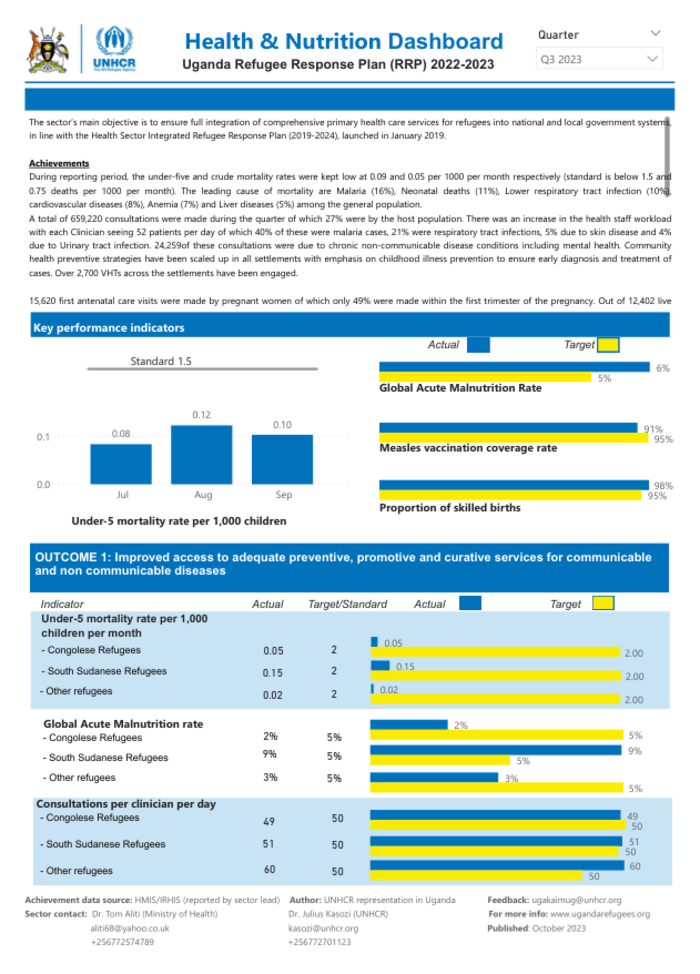
The sector’s main objective is to ensure full integration of comprehensive primary health care services for refugees into national and local government systems, in line with the Health Sector Integrated Refugee Response Plan (2019-2024), launched in January 2019.
Achievements
During reporting period, the under-five and crude mortality rates were kept low at 0.09 and 0.05 per 1000 per month respectively (standard is below 1.5 and 0.75 deaths per 1000 per month). The leading cause of mortality are Malaria (16%), Neonatal deaths (11%), Lower respiratory tract infection (10%), cardiovascular diseases (8%), Anemia (7%) and Liver diseases (5%) among the general population.
A total of 659,220 consultations were made during the quarter of which 27% were by the host population. There was an increase in the health staff workload with each Clinician seeing 52 patients per day of which 40% of these were malaria cases, 21% were respiratory tract infections, 5% due to skin disease and 4% due to Urinary tract infection. 24,259of these consultations were due to chronic non-communicable disease conditions including mental health. Community health preventive strategies have been scaled up in all settlements with emphasis on childhood illness prevention to ensure early diagnosis and treatment of cases. Over 2,700 VHTs across the settlements have been engaged.
15,620 first antenatal care visits were made by pregnant women of which only 49% were made within the first trimester of the pregnancy. Out of 12,402 live
